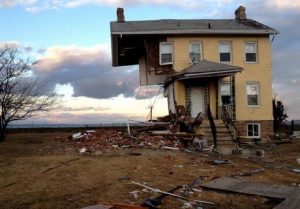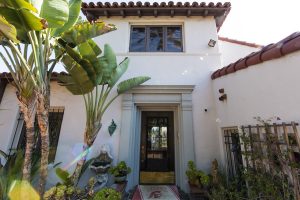
Celebrate Earth Day by planting these 5 Native California Trees!
With Earth Day right around the corner, lets take a moment to appreciate our neighborhood trees! Trees add a lot to a neighborhood. They are beautiful, they can provide habitat for wildlife, offer shade and shelter from the wind, cool urban neighborhoods, and even add to your property value!
Tree Disparity
Unfortunately, trees are not shared equally in many California communities. More affluent neighborhoods enjoy much more green space than low-income neighborhoods as demonstrated in the aerial video below, comparing Los Angeles communities. The increasing popularity and affordability of aerial photography has allowed many artists, photographers and activists to be able to illustrate the problem more visually, and this kind of comparison can be made in communities across California.
California Habitat Loss
The Western United States lost a staggering amount of formerly natural land to human development in recent years. Between 2001-2011, we lost a football field's worth of habitat every 2.5 minutes according to a study by the Center for American Progress and Conservation Science Partners.
Of all 11 Western states studied, California lost the largest amount of natural land to development. 784 square miles of natural landscape was transformed into human industry, an area almost as large as Los Angeles and San Diego combined, and almost a fifth of the toal land across the West. That's enough land to stretch from LA to Denver, more than 5 miles wide.

California Native Trees
Let's help to grow the tree population in our local communities!
Find a tree planting volunteer center
There’s nothing like going native if you want to minimize problems and reduce water use! Here are five trees that love the California climate. All these trees are drought tolerant, but remember, trees are only drought tolerant after they are established. Give them plenty of water when they are young, about once a week for their first three years and less once they are established.
Click on the links to find the Be Water Wise site, containing more information on each tree, and dozens of other water-wise tree descriptions.

This medium size native tree is sometimes described as a shrub. It’s a fast grower. Its height can be as low as 15 feet (shrub) to 40 feet high (tree). It has white flowers in the spring and edible cherries in the fall. And it attracts butterflies, birds and has nice scent. The leaves are dense so they provide nice shade.

This is a box elder in the fall. This large tree does better in the shade vs full sun. It’s pretty tall, growing quickly to 30’ to 50’ high. It’s a hardy shade tree during the summer. It’s deciduous, but you’ll get some nice yellow-green leaves before they fall off. There’s also a flamingo version of this with pink blossoms if you prefer.

If you love color check out the magenta blossoms of the Western Redbud in the spring. In the fall it delivers yellow and red colors. Not surprisingly hummingbirds and butterflies like it a lot. It’s called a shrub, but it grows about 10 to 20 feet high and about 10-15 feet wide growing at a moderate pace. It prefers partly sunny spots. It can also handle sandy soil.

This is a medium sized tree that you often see in parking lots or median strips because they are hearty. They like partial sun and sandy soil. They grow fast, up to 50 feet high and 60 feet wide. It’s a deciduous tree with the leaves turning a bright yellow—as in the photo– before they drop.

If you want a pyramid shaped evergreen tree that gives good shade, check out the Incense Cedar. It grows to a very tall 200 feet. So don’t plant it under telephone poles or wires. Its trunk can grow to be 10 feet in diameter. Its bark is a nice reddish brown color. It likes clay soil. Its wood is good for pencils because it doesn’t have splinters. But in your yard it’s better as a big shade tree.





0 Responses
I cannot say that I really have any practical use for any of this, but I would like to think that people are out there getting the benefit from these beautiful trees. I tend to take the take what I can get approach, but these do seem nice.